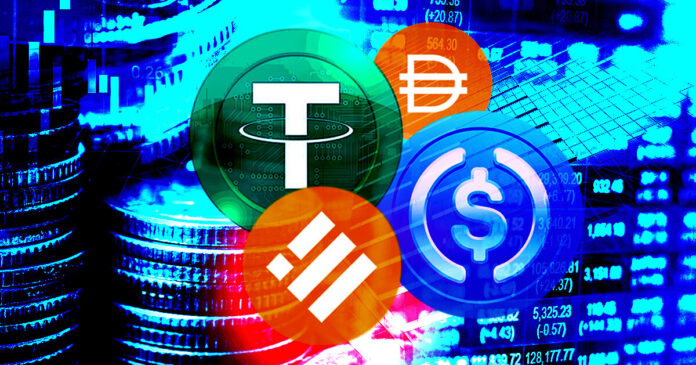The Committee on Payments and Market Infrastructures (CPMI) and the International Organization of Securities Commissions (IOSCO) of the Bank for International Settlements (BIS) published guidance on stablecoin regulation this past July 13.
The press release stated that the guidance aims to apply the “same risk, same regulation” legal approach to systemically important stablecoins used for payments.
The guidance compares the transfer function of stablecoins to that performed by other financial market infrastructures (FMIs). Therefore, the Principles for Financial Market Infrastructure (PFMI) would have to be observed by stablecoins that can be transferred and are deemed essential to the financial system.
The PFMI refers to international standards set down for financial institutions. The scope of the PFMI is to enhance the safety and efficiency of financial institutions, limit systemic risk, and foster transparency and financial stability.
Which stablecoins need to follow PFMI and how
The PFMI already provides guidelines to determine which FMIs are essential. For instance, any FMI that has the potential to trigger a systemic disruption is considered to be important. To identify which stablecoins are important, the BIS guidance has laid down further criteria.
This includes the size of the stablecoin, which can be determined through various data points, including the number of users and transactions, the value of transactions, and the value of stablecoins in circulation.
While assessing the importance of stablecoins, authorities also need to consider the risk profile of the stablecoin, how connected it is to the traditional financial system, and whether or not it can be substituted for time-critical services the BIS report said.
The report, however, said that countries could choose whether or not they want to make the observance of PFMI mandatory for stablecoins.
The BIS guidance has elaborated on governance, risk management, settlement finality, and money settlements that stablecoins should follow. For instance, the BIS report said there should be one or more clearly identifiable legal entities operated by a few people who can be held responsible and accountable. Additionally, stablecoin issuers need to monitor the stablecoin’s risks regularly and implement appropriate risk management frameworks to mitigate those risks.
The BIS report added that stablecoin issuers need to minimize and strictly control the credit and liquidity risks of the stablecoin and ensure that the “stablecoin is an acceptable alternative to the use of central bank money.”
A critical remark is that the guidance does not cover stablecoins pegged to a basket of fiat currencies. The report added that the BIS would continue to study if the current guidelines are sufficient for such multi-currency-backed stablecoins.
The guidance added that stablecoins might have other “shortcomings” beyond the scope of the PFMI, like consumer protection, data privacy, anti-money laundering, and terrorism financing.
Therefore, regulation, supervision, and oversight of stablecoins alone may not be sufficient to tackle these challenges and needs to be as said by the report:
“complemented by other private or public sector efforts.These efforts could be such as improvements in existing payment infrastructures and exploration or development of central bank digital currency,”
Continued regulatory pressure towards stablecoins
The regulation of stablecoins has become a priority for governments and international organizations since the collapse of the Terra ecosystem in May shined a spotlight on the potential risks posed by these assets.
Sir Jon Cunliffe, Chair of the CPMI and Deputy Governor for Financial Stability at the Bank of England, said that while the present market disruptions have caused widespread losses, the disturbances do not qualify as “systemic events.” However, these market turmoils point out the speed with which market confidence is eroded during such times and the intense volatility of cryptocurrencies, Cunliffe said. He warned:
“Such events could become systemic in the future, especially given the strong growth in these markets and the increasing linkages between cryptoassets and with traditional finance.”
Credit: Source link






















 Bitcoin
Bitcoin  Ethereum
Ethereum  XRP
XRP  Tether
Tether  Solana
Solana  USDC
USDC  Dogecoin
Dogecoin  Cardano
Cardano  Lido Staked Ether
Lido Staked Ether  TRON
TRON  Wrapped Bitcoin
Wrapped Bitcoin  Wrapped stETH
Wrapped stETH  Chainlink
Chainlink  Avalanche
Avalanche  Sui
Sui  Stellar
Stellar  Litecoin
Litecoin  Shiba Inu
Shiba Inu  Toncoin
Toncoin  Hedera
Hedera  LEO Token
LEO Token  USDS
USDS  Hyperliquid
Hyperliquid  Polkadot
Polkadot  WETH
WETH  MANTRA
MANTRA  Bitcoin Cash
Bitcoin Cash  Ethena USDe
Ethena USDe  Bitget Token
Bitget Token  Wrapped eETH
Wrapped eETH  Uniswap
Uniswap  Monero
Monero  NEAR Protocol
NEAR Protocol  Pepe
Pepe  WhiteBIT Coin
WhiteBIT Coin  Aave
Aave  Ondo
Ondo  Bittensor
Bittensor  Aptos
Aptos  Internet Computer
Internet Computer  Dai
Dai  Official Trump
Official Trump  Ethereum Classic
Ethereum Classic  Mantle
Mantle  Tokenize Xchange
Tokenize Xchange  OKB
OKB  Gate
Gate  sUSDS
sUSDS  Coinbase Wrapped BTC
Coinbase Wrapped BTC 
